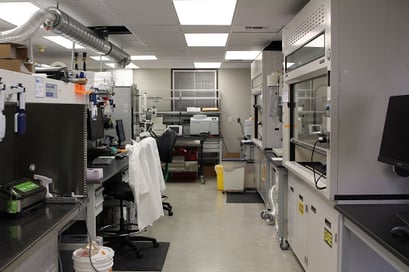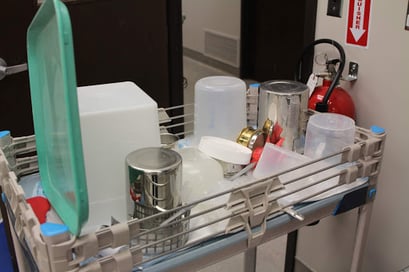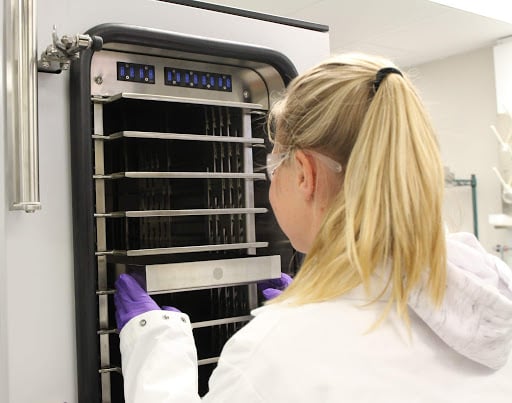Many of you may be wondering, “What is formulations and what happens in a formulations lab?” And no, formulation scientists do not spend their days mixing formula for infants, although our lab might smell better if they did. Formulations is the science of taking an unstable active ingredient and mixing it with additives, carriers, and other materials to make it shelf stable, easy to use, and safe. Formulation scientists have to accomplish these goals while working within EPA regulations and a product label that defines what a product contains.

Meet Kayla, one of AgBiome’s formulation scientists. Her educational background is in chemical engineering and since graduation she has worked in pharma and agriculture. During her time working for a chemical company, she discovered her interest in formulation chemistry. A couple years ago, AgBiome was successful in recruiting Kayla to apply her knowledge to formulating biologicals for our products and discovery pipeline. She has worked on our first product, Howler, strains of interest from our screening groups, and product candidates in development.
Formulating biologicals is tough work. The end product has to be easy to apply, shelf stable, and safe, but many formulation processes can be tough on the organism and kill it before it ever reaches the user. This is why a lot of formulations lab work is trial and error, with many repetitive experiments.
A typical busy day in the lab would start with the arrival of material that needs to be formulated. In our case, this material is an organism grown in a nutritive broth to produce trillions of cells of that selected microbe. Before the product can be used in the field as a biocontrol agent, it will have to formulated so it doesn’t die before it gets there. Once the formulations team determines the specs of the cells that have arrived, like percent moisture and solids content, they turn on their equipment and prepare materials they need. They will formulate the cells with multiple additives, mix ingredients, and then dry the material. Drying can occur several ways and depends on the organism being formulated. Once the material is dried, then it is milled and sent through a series of sieves to collect particles that are the same size.


Pictured: (L) One part of the formulations lab work space and (R) a cart full of clean dishes when all the work is finished.
The day ends with packaging material for additional studies to determine how long the organism will survive under various conditions and by defining physical properties of different formulations. Processing a sample, or multiple samples, creates a lot of dirty equipment, dishes, and glassware. If you hate washing dishes, you probably wouldn’t survive in this field of research.
A couple of extremely interesting facts about formulations work are how much the properties of the original active ingredient affect the formulated product outcome. This is why it’s so important to have consistent production of your active ingredient while conducting formulations experiments. It’s also amazing how much scientists learn about this discipline on the job. There are no educational programs aimed specifically at producing scientists with these skills, so almost all of their formulation experience comes from on the job training.
Even if you’re not applying products to protect your plants commercially or at home, a formulations scientist has touched your life. Whether it’s the bar of soap in your shower or the prepared dinner you’ll consume this evening, these products need to be safe and ready when you’re going to use them.
 Pictured: Kayla checking on a sample in the large freeze dryer.
Pictured: Kayla checking on a sample in the large freeze dryer.
.png?width=299&name=AgBiome-Logo-color-registered%20(1).png)